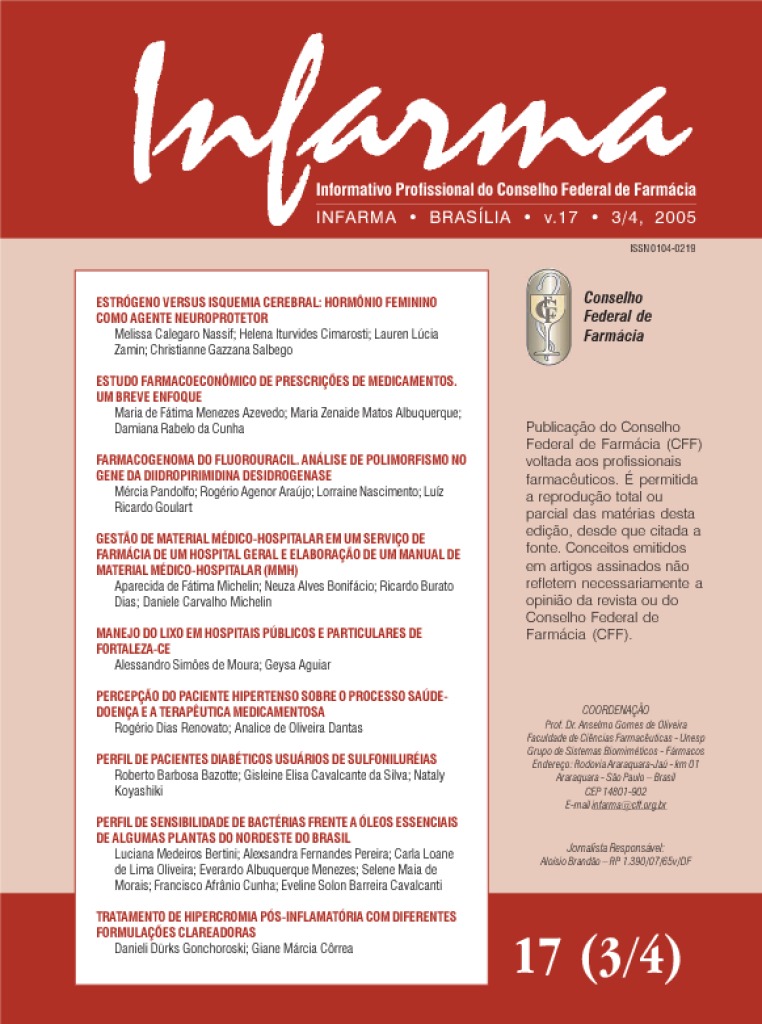FARMACOGENOMA DO FLUOROURACIL. ANÁLISE DE POLIMORFISMO NO GENE DA DIIDROPIRIMIDINA DESIDROGENASE
Abstract
O 5-fluorouracil (5-FU), um dos fármacos mais utilizados na quimioterapia do câncer (DIASIO & HARRIS, 1989), é um antimetabólito que interfere na duplicação e transcrição do DNA. Embora o mecanismo de ação desse fármaco ainda não ter sido completamente elucidado é provável que seja pela ligação do fluorodeoxiribonucleotídeo monofosfatado(FdUMP), um metabólito da droga à timilidato sintetase, inativando-a, portanto, impedindo a síntese das timinas e consequentemente a síntese do DNA. Um segundo mecanismo é a incorporação de outro metabólito da droga, o Furd, ao RNA mensageiro no momento de sua transcrição, no lugar da uracila, formando, assim, um falso RNA. A biotransformação do 5-FU em β-alanina fluorinatada resulta em sua excreção do organismo. Cerca de 70-80% desta biotransformação é realizada pela diidropirimidina desidrogenase(Dpd) a ß-alanina fluorinatada (WOODCOCK et al, 1980).Downloads
Published
2013-01-21
How to Cite
Pandolfo, M., Araújo, R. A., Nascimento, L., & Goulart, L. R. (2013). FARMACOGENOMA DO FLUOROURACIL. ANÁLISE DE POLIMORFISMO NO GENE DA DIIDROPIRIMIDINA DESIDROGENASE. Infarma - Pharmaceutical Sciences, 17(3/4), 62–65. Retrieved from https://cff.emnuvens.com.br/infarma/article/view/280
Issue
Section
Original article
License
Authors who publish in this journal agree to the following terms:
- Authors retain the copyright and grant the journal the right of first publication, with the work simultaneously licensed under the Licença Creative Commons Attribution which allows the sharing of work with acknowledgment of authorship and initial publication in this journal.
- Authors are authorized to take additional contracts separately, for non-exclusive distribution of the version of the work published in this journal (e.g. publish in institutional repository or as a book chapter), with acknowledgment of authorship and initial publication in this journal.
- Authors are allowed and encouraged to publish and distribute their work online (e.g. in institutional repositories or on their personal page) at any point before or during the editorial process, as this can generate productive changes as well as increase the impact and Citation of published work (See O Efeito do Acesso Livre ).


